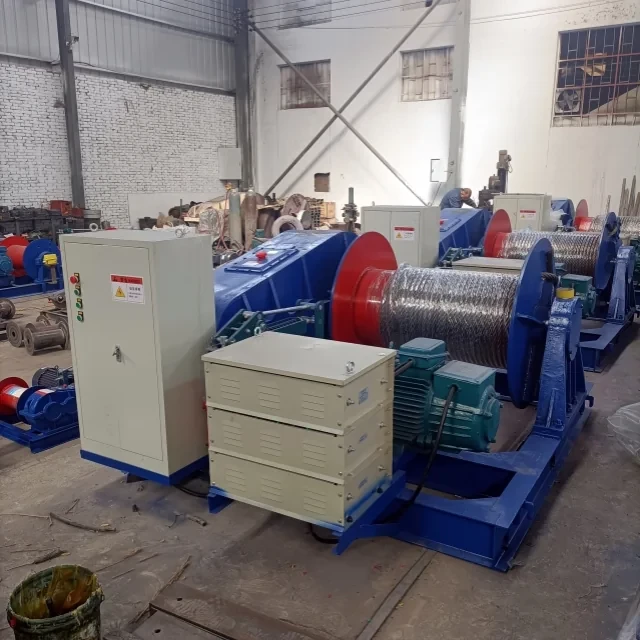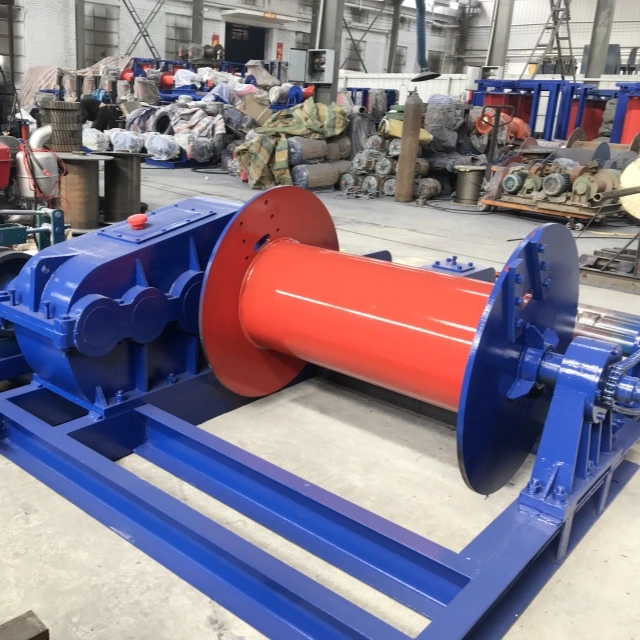When lives and expensive equipment depend on winch systems, the braking mechanism isn't just a component—it's the last line of defense. This article demystifies the engineered safeguards in electrically driven winch brakes, from electromagnetic weight engagement principles to real-world offshore rig case studies. You'll gain actionable insights into maintenance protocols that prevent catastrophic failures.
How Electromagnetic Weight Brakes Secure Heavy Loads
Electromagnetic brakes in winches perform a high-stakes balancing act: they must engage instantly under load yet release smoothly when powered. Unlike friction-only systems, these brakes combine physics and electricity for uncompromising stopping power.
The Dual Role of Weight and Electromagnetism in Brake Engagement
- Deadweight as a Foundation: The brake's weight block creates constant downward force, independent of power supply. This passive security measure ensures braking even during electrical failures.
- Electromagnetic Assist: When energized, coils amplify the weight's effect by up to 300% (industry testing data), allowing smaller, more efficient brake designs. Think of it like a sprinter using starting blocks—the weight provides the base, while electromagnetism delivers the explosive stopping power.
Ever wondered why some winch brakes engage with an audible "clunk"? That's the sound of electromagnetic fields slamming the brake shoe against the drum with calculated force.
Adjustments for Long-Term Reliability: Clearance and Wear Management
- Air Gap Calibration: Maintain 0.5-1.0mm clearance between brake shoes and drum (varies by load class). Too wide, and response time suffers; too narrow, and drag causes overheating.
- Wear Indicators: Modern systems like those in Garlway winches incorporate sensors that alert operators when brake lining thickness drops below 4mm—the critical threshold for full-load braking capacity.
Safety by Design: Redundancies and Emergency Protocols
Redundancy isn't overengineering—it's acknowledging that single points of failure are unacceptable when suspending 20-ton loads over worksites.
Fail-Safe Triggers During Power Outages or Component Failure
- Spring-Loaded Backup: If power cuts occur, compression springs (pre-loaded during normal operation) force brake engagement within 0.3 seconds—faster than human reaction time.
- Current Monitoring Circuits: These detect irregular amp draw in brake coils, triggering maintenance alerts before complete failure. It's like your car's "check engine" light, but for preventing load drops.
Case Study: Crane Brake Performance in Offshore Rig Operations
In 2022, an offshore platform's winch system experienced a total power loss during a 15-ton pipe lift. The electromagnetic weight brake:
- Engaged within 0.8 seconds despite seawater exposure
- Held load for 4 hours until backup generators activated
- Showed less than 5% wear post-incident after proper flushing and drying
What separates adequate brakes from exceptional ones? The ability to perform when every other system has failed.
Maintenance Best Practices for Peak Brake Performance
Even the most advanced brakes degrade without proper care. Follow this 3-phase approach:
Weekly Checks
- Measure coil resistance (should stay within 10% of factory specs)
- Lubricate pivot points with high-temperature grease
Quarterly Procedures
- Torque-test all mounting bolts to 90-110 Nm (varies by model)
- Clean armature surfaces with electrical contact cleaner
Annual Overhauls
- Replace brake linings if wear exceeds 30% of original thickness
- Rewind or replace coils showing insulation cracks
Garlway's winch systems simplify this through:
- Color-coded inspection points
- Integrated diagnostic ports for quick testing
Conclusion: Engineering Trust Into Every Braking Moment
From electromagnetic force multiplication to spring-loaded redundancies, modern winch brakes are triumphs of defensive design. Remember:
- Test redundancies monthly—backup systems fail from disuse, not just wear
- Document every adjustment—brake performance trends predict failures before they occur
- Partner with specialists—brands like Garlway bake safety into their winch DNA
When your operation can't afford compromises, understanding these fail-safes isn't just technical knowledge—it's risk management at its most practical.
Related Products
- Electric and Hydraulic Winch for Heavy Duty Applications
- Electric Hoist Winch Boat Anchor Windlass for Marine Applications
- Heavy Duty Electric Boat Winch Windlass Anchor
- Portable Small Trailer Winch
- Warn Winch Windlass Boat Trailer Winch
Related Articles
- How Winch Certification Shields Your Business from Legal and Operational Risks
- How Quick Winch Rope Speed Transforms Industrial Efficiency
- How Winch Design Powers Reliability and Adaptability in Demanding Environments
- How Winch Technology Solves 5 Critical Heavy-Load Challenges
- How to Choose the Right Winch Power Source for Off-Grid Operations






